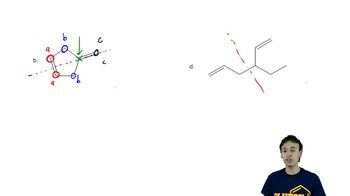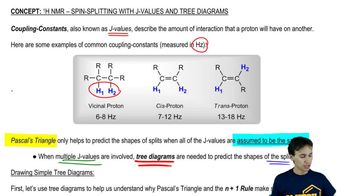Draw the signal for the following multiplicities. What is the ratio of peaks within each signal?
(e) sextet
 Verified step by step guidance
Verified step by step guidance Verified video answer for a similar problem:
Verified video answer for a similar problem:



 8:06m
8:06mMaster Common Splitting Patterns with a bite sized video explanation from Johnny
Start learning